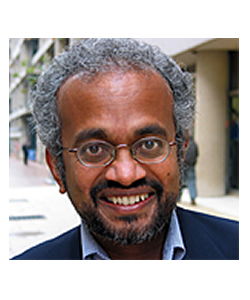“In this clinic we are accommodated well and treated respectfully… We have the opportunity to converse with the health worker, describing the illness, and when we are mistaken or do not understand, we are not threatened. They help us locate the pain and they explain everything about the disease and how to treat it. They encourage us to speak and they try to give us confidence.” –Patient in Burkina Faso
At a time when many African countries may not achieve the health targets set forth in the Millennium Development Goals, the contribution of faith-inspired providers to improved health care is crucial. A recent World Bank study suggests that, while these providers’ market share and reach to the poor may be smaller than often assumed, they seem particularly good at serving their patients. Indeed, they seem to be experts in the science (or maybe in this case, the art) of delivery, a concept World Bank President Jim Kim has spoken of recently in several keynote addresses on achieving universal health coverage.
The Bank’s study provides illuminating evidence on the market share of faith-based providers, commonly believed to be responsible for a large share of the health services available in Africa. In a number of African countries, data are available on hospital beds provided by Christian Health Associations (CHAs) and the public sector (data on other private sector providers are harder to come by). As a share of the hospital beds provided by the CHAs and Ministries of Health, the CHAs often account for one-third or more of the available beds, which is indeed very large.
But when using data from household surveys, which include all private health facilities as well as traditional healers, chemical stores, pharmacists, and other health service providers, and when including countries where CHAs are not present, the region-wide market share of faith-inspired providers is smaller, of the order of 10%. Still, even if their market share is smaller than often claimed, the contribution of faith-inspired providers clearly remains significant.
Consider next the issue of reaching the poor. It is also often believed that faith-inspired providers reach the poor as a matter of priority, while private, secular providers reach mostly wealthier households. There is truth to this, but data from household surveys suggest that differences in beneficiary incidence between various types of providers are smaller than often believed and that none of the three types of providers (public, faith-inspired, or private secular) serve the poor more than the better off in absolute terms.
Especially for faith-inspired providers, this occurs in part due to a need for some level of cost recovery. As faith-inspired providers often receive only limited support from governments, they have no choice but to charge for care which may make it difficult for the poor to visit. Households often prefer faith-inspired facilities, but they cannot always afford them, even when the facilities make special efforts to make their services affordable.
Consider, finally, the quality of health services, which is arguably the most important issue. Data from household surveys suggests that faith-inspired providers enjoy higher satisfaction rates than both public and private secular facilities. This explains why it is often reported that patients are willing to walk long distances to visit faith-inspired facilities—a finding is supported by both quantitative and qualitative evidence.
What seems to drive the higher satisfaction rates with faith-inspired providers is the quality of the service provided and the respect with which patients are treated. As one patient said, “Human warmth is very present in this center. There is a true closeness between the patients and the sister and her colleagues. One is spoken to, touched and accepted.” Evidence shows that many faith-inspired providers work more closely with communities, and that they succeed in promoting health through preventive services as well as nutritional and educational programs.
In sum, while faith-inspired providers may have lower market shares than commonly believed, and while they may not always be located in poor areas or serve primarily the poor, they provide vital services that are seen by patients as being of higher quality than the services provided by other providers. The evidence clearly points to a major role played by these providers, but more importantly it calls for stronger public-private partnerships than are currently observed. In addition, mechanisms should be put in place so that other care providers can learn from those faith-inspired providers that seem to excel at the science—or perhaps the art—of delivery.
This post was originally written for the World Bank's "Investing in Health" blog.




